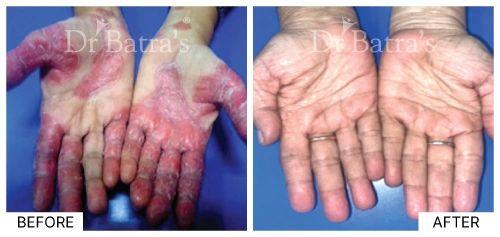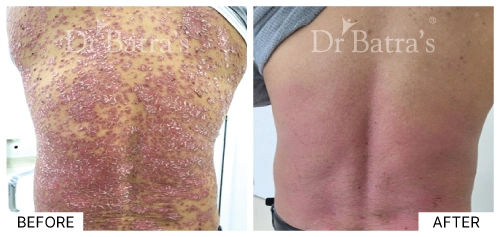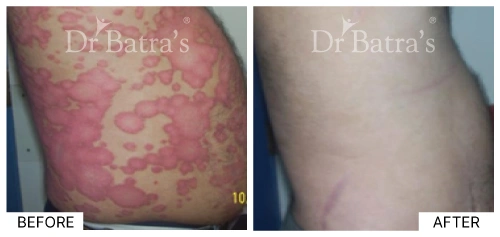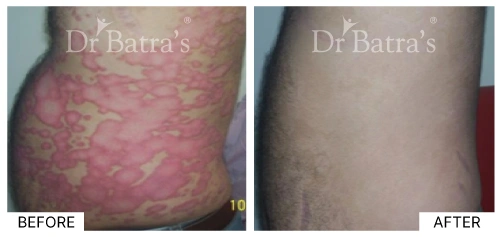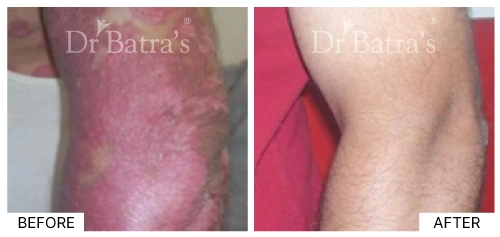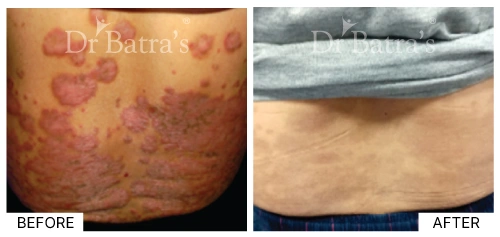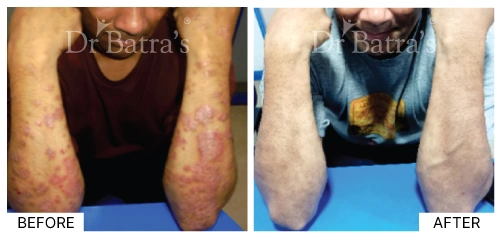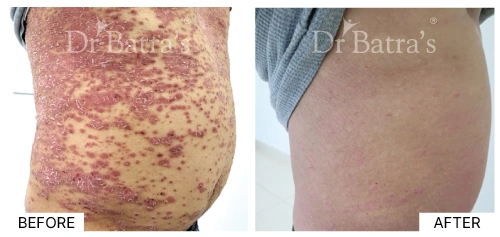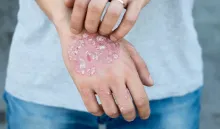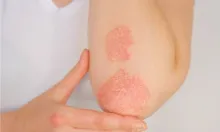Recognising the Symptoms of Psoriasis
Psoriasis is a chronic autoimmune condition that affects the skin and causes a variety of symptoms. Early recognition of these symptoms can lead to better management and treatment outcomes. Here, we delve into the symptoms associated with different types of psoriasis, providing a comprehensive guide to recognising and understanding this complex condition.
- Recognising the Symptoms of Psoriasis
- Understanding Psoriasis Symptoms
- Plaque Psoriasis Symptoms
- Location and Distribution
- Severity and Itching
- Guttate Psoriasis Symptoms
- Triggers and Onset
- Pustular Psoriasis Symptoms
- Types and Subtypes
- Complications and Management
- Inverse Psoriasis Symptoms
- Challenges and Management
- Erythrodermic Psoriasis Symptoms
- Complications and Treatment
- Nail Psoriasis Symptoms
- Impact on Nails and Treatment
- Scalp Psoriasis Symptoms
- Management and Care
- Psoriatic Arthritis Symptoms
- Joint Involvement and Pain
- Diagnosis and Treatment
- Palmoplantar Psoriasis Symptoms
- Impact on Daily Activities
- FAQs
Understanding Psoriasis Symptoms
Symptoms of psoriatic disease differ widely among individuals. Common indicators include red, scaly skin patches, dry and cracked skin that may bleed, itching, burning sensations, and swollen, stiff joints.
Plaque Psoriasis Symptoms
Plaque psoriasis is the most common form of psoriatic disease. Its symptoms are characterised by raised, inflamed, red lesions covered with silvery-white scales. These plaques typically appear on the elbows, knees, scalp, and lower back. The severity of itching and pain varies, often impacting daily activities and quality of life.
Location and Distribution
Psoriasis can appear anywhere on the body, but common locations include the scalp, elbows, knees, and lower back. When looking for signs of psoriasis on the body, it is important to note the distribution of psoriasis as it can help identify the type and severity of the condition.
Severity and Itching
The symptoms of psoriatic diseases range from mild to severe. Psoriasis itching is a common symptom, which can be intense and distressing, leading to scratching and further skin damage.
Guttate Psoriasis Symptoms
Guttate psoriasis often appears suddenly, with small, droplet-shaped sores on the trunk, arms, legs, and scalp. This type of psoriasis is more common in children and young adults and can be triggered by bacterial infections like strep throat.
Triggers and Onset
Various factors, including stress, skin injury, infections, and certain medications, can trigger psoriasis. Understanding these triggers can help keep an eye on the early symptoms of psoriasis, enable the management of flare-ups, and reduce symptom severity.
Duration and Resolution
Symptoms of psoriasis can last for weeks or months and may go through cycles of flare-ups and remission. While there is no cure, symptoms can be managed with appropriate treatment.
Pustular Psoriasis Symptoms
Pustular psoriasis shows up as white blisters on red skin. It can happen anywhere on the body, but it's most often on the hands and feet. This type of psoriasis can cause fever, chills, severe itching, and fatigue.
Types and Subtypes
Psoriasis is categorised into several types: plaque, guttate, pustular, inverse, and erythrodermic. Each type has unique symptoms and requires different management strategies.
Complications and Management
Complications of psoriasis can include psoriatic arthritis, eye conditions, obesity, type 2 diabetes, and cardiovascular diseases. Effective management involves a combination of topical treatments, phototherapy, systemic medications, and lifestyle changes.
Inverse Psoriasis Symptoms
Inverse psoriasis causes bright red, shiny lesions in skin folds, such as under the breasts, in the groin, and around the buttocks. This type is often aggravated by friction and sweating.
Challenges and Management
Managing inverse psoriasis involves reducing friction, keeping the area dry, and using topical treatments to reduce inflammation and discomfort.
Erythrodermic Psoriasis Symptoms
Erythrodermic psoriasis is a rare but severe form characterised by widespread redness and scaling covering large body areas. It can cause severe itching, pain, and an increased heart rate, often requiring emergency medical treatment.
Complications and Treatment
Erythrodermic psoriasis can lead to severe complications such as infection, dehydration, and heart failure. Treatment typically involves hospitalisation, systemic medications, and supportive care.
Nail Psoriasis Symptoms
Nail psoriasis affects the fingernails and toenails, causing pitting, discolouration, and separation of the nail from the nail bed. This condition can be particularly challenging to treat and may be associated with psoriatic arthritis.
Impact on Nails and Treatment
Treatment for nail psoriasis includes topical treatments, systemic medications, and, in some cases, biologics. Proper nail care and avoiding nail trauma can help manage symptoms.
Scalp Psoriasis Symptoms
Symptoms of scalp psoriasis appear as red, itchy areas with silvery-white scales. It can extend beyond the hairline to the forehead, neck, and around the ears. This type can be particularly itchy and uncomfortable.
Management and Care
Managing scalp psoriasis symptoms involves using medicated shampoos, topical treatments, and systemic medications in severe cases. Regular, gentle hair care is also important.
Psoriatic Arthritis Symptoms
Psoriatic arthritis is an inflammatory joint disease that affects some people with psoriasis. Symptoms of psoriatic arthritis include joint pain, stiffness, and swelling, which can affect any joint in the body, including the spine. Common signs of psoriatic arthritis include swollen fingers and toes, foot pain, especially in the heels and soles, lower back pain, and reduced range of motion in the affected joints. This inflammation can lead to significant discomfort and, if left untreated, may result in joint damage.
Joint Involvement and Pain
Joint pain from psoriatic arthritis can be severe and may lead to joint damage if not treated promptly. Early diagnosis and treatment are crucial for preventing permanent joint damage.
Diagnosis and Treatment
Diagnosing psoriatic arthritis involves a combination of physical exams, imaging tests, and blood tests. Treatment includes nonsteroidal anti-inflammatory drugs (NSAIDs), disease-modifying antirheumatic drugs (DMARDs), and biologics.
Palmoplantar Psoriasis Symptoms
Palmoplantar psoriasis affects the palms of the hands and the soles of the feet, causing thick, red, scaly patches that can be painful and crack. This type can significantly impact daily activities due to the discomfort it causes.
Impact on Daily Activities
Managing palmoplantar psoriasis involves using topical treatments and systemic medications and avoiding activities that put pressure on the affected areas.
Choose Dr Batra's® for Psoriasis Treatment Now
At Dr Batra's®, we have treated over 141,000 skin patients in 35 years, achieving a 94.3% success rate, verified by the American Quality Assessors. Studies show patients experience better outcomes at Dr Batra's® compared to other practitioners, highlighting our superior treatment efficacy.
Our personalised homeopathic treatments include customised plans with homeopathic medicine, counselling, and individualised diet plans prepared by our nutritionists. This approach boosts immunity and controls disease progression.
Combining homeopathy with advanced skin treatments ensures safe, effective, and long-lasting results. Choose Dr Batra's® for proven success and personalised care in psoriasis treatment.
Personalised Homeopathy Treatments
Our homeopathy is tailored to meet individual needs, addressing the root cause of psoriasis for long-term relief. By targeting underlying issues, we ensure holistic healing. Additionally, our doctors remain at the cutting edge of homeopathic research and advancements, consistently enhancing their skills to provide the highest-quality patient outcomes. With their expertise and compassionate approach, patients can trust that they are receiving world-class care at Dr Batra's®.
Tailored to Your Specific Condition
Each treatment plan is crafted based on a thorough assessment of medical history, lifestyle, and symptoms. This personalised approach develops the most effective management plan for psoriasis, achieving optimal results and long-lasting improvement.
Our team has years of experience and specialised training in homeopathic medicine, giving them the skills to provide personalised care for each patient. What makes us stand out is our commitment to patient-centred care. We take the time to listen to each patient's concerns, understand their lifestyle, and review their medical history. This helps us create customised treatment plans that address the root cause of psoriasis and promote lasting healing.
Expert Team of Homeopathic Doctors
Our exceptional team of homeopathic doctors, selected for their expertise and dedication, provide personalised care tailored to each patient's needs. They stay updated with the latest research to ensure the best outcomes. Trust Dr Batra's® for world-class care and experience the difference of personalised homeopathy.
The Efficiency of Homeopathy
At Dr Batra's®, homeopathy is highly effective for treating psoriasis and other skin conditions. Here's why:
- Personalised Care: Treatments are customised to address your specific needs and the root cause of psoriasis for lasting relief.
- Safe and Natural: Homeopathy uses natural medicine that works with your body's healing process without side effects.
- Complete Treatment: We use homeopathy and advanced tools like Woodlamps and Derma Heal to treat the physical and mental aspects of psoriasis.
- Proven Results: Our method has a 94.3% success rate in treating skin disorders, verified by the American Quality Assessors.
By choosing Dr Batra's®, you benefit from our extensive experience, high success rates, and personalised care, ensuring effective and long-lasting results in managing psoriasis.
Medically Reviewed

Qualification
-
B.H.M.S (Maharashtra University of Health Sciences)
-
FCHD (Fellowship in Homeopathic Dermatologist - Mumbai)
FAQs
What does psoriasis look like when it starts?
When psoriasis first starts, it often appears as small red bumps. These bumps can grow larger and form thick, silvery scales. The skin around these bumps might be dry and itchy.
What is the first stage of psoriasis
The first stage of psoriasis usually involves the appearance of red, raised patches on the skin. These patches may be covered with silvery scales. Starting symptoms of psoriasis can also include itching and mild irritation.
What do nails look like with psoriatic arthritis?
Nails affected by psoriatic arthritis often show pitting (small depressions on the nail surface) and discolouration. They can sometimes separate from the nail bed and become thickened and ridged.
Why am I getting psoriasis all of a sudden?
Sudden onset of psoriasis can be triggered by factors like stress, infections (such as strep throat), skin injuries, or certain medications. Understanding these triggers can help in managing the condition.
How quickly does psoriasis appear?
The appearance of psoriasis can vary. For some, it may develop slowly over time, while for others, it can appear suddenly. Factors like stress, infections, or skin injuries can accelerate its onset.
What conditions can be mistaken for psoriasis?
Several skin conditions, including eczema, seborrheic dermatitis, fungal infections, and lupus, can be mistaken for psoriasis. Proper diagnosis by a healthcare professional is essential.
What are the scientific symptoms of psoriasis?
Scientific symptoms of psoriasis include red, raised patches of skin covered with silvery scales, dry and cracked skin that may bleed, itching, burning sensations, and thickened or pitted nails.
How is psoriasis different from normal skin?
Psoriasis causes the skin to regenerate faster than normal, leading to the buildup of skin cells on the surface. This results in the characteristic red patches and silvery scales, unlike normal skin, which regenerates regularly.
Where on the body does psoriasis typically appear?
Psoriasis can appear anywhere on the body but is most commonly found on the scalp, elbows, knees, and lower back. It can also affect nails and joints.
Can psoriasis start at any time?
Yes, psoriasis can start at any age, but it most commonly appears between 15 and 35. It can also start later in life.
Does psoriasis have other symptoms?
Besides skin symptoms, psoriasis can cause psoriatic arthritis, which includes joint pain, stiffness, and swelling. Due to the visible nature of the condition, some people may also experience fatigue and emotional distress.
How to test for psoriasis at home?
While there's no definitive home test for psoriasis, you can look for common signs such as red patches covered with silvery scales, dry and cracked skin, and nail changes. However, a diagnosis should be confirmed by a healthcare professional.
What age does psoriasis show?
Psoriasis can appear at any age but is most commonly diagnosed in individuals between 15 and 35. It can also occur in childhood or later in life.
